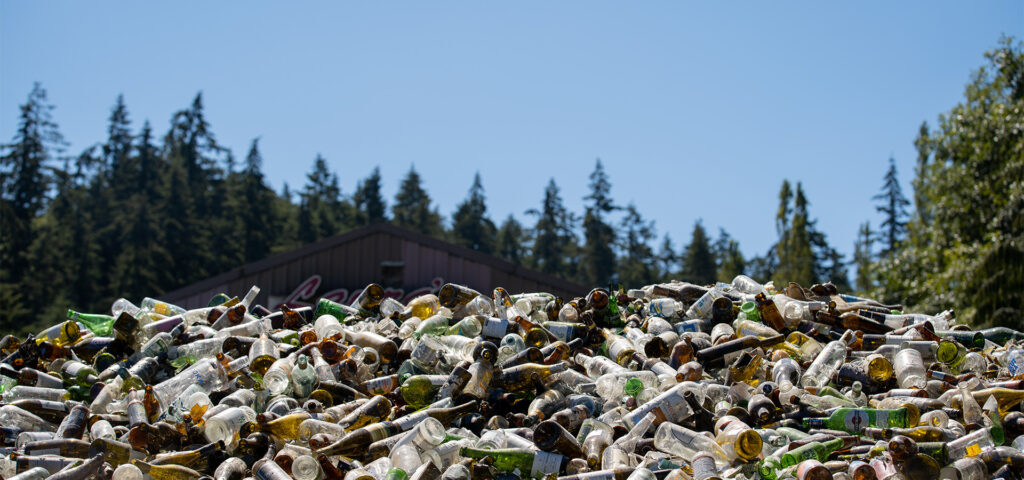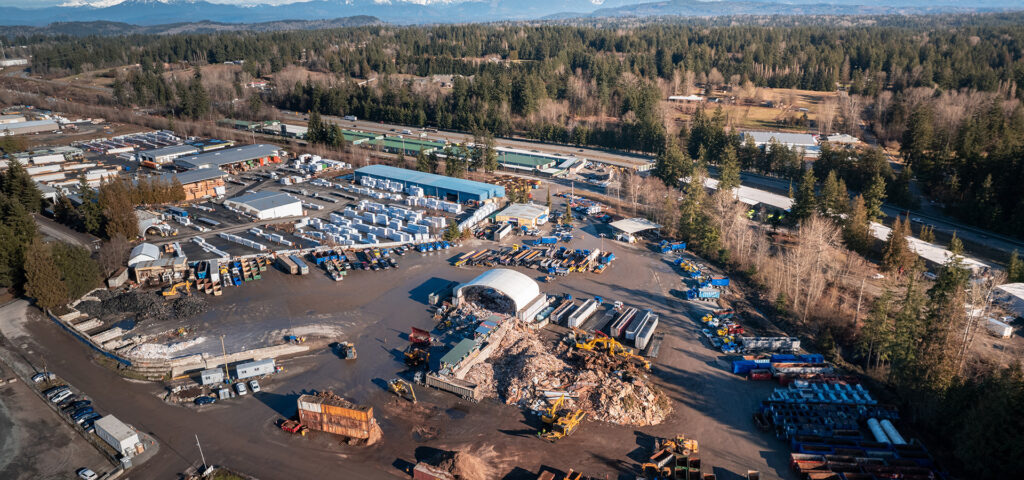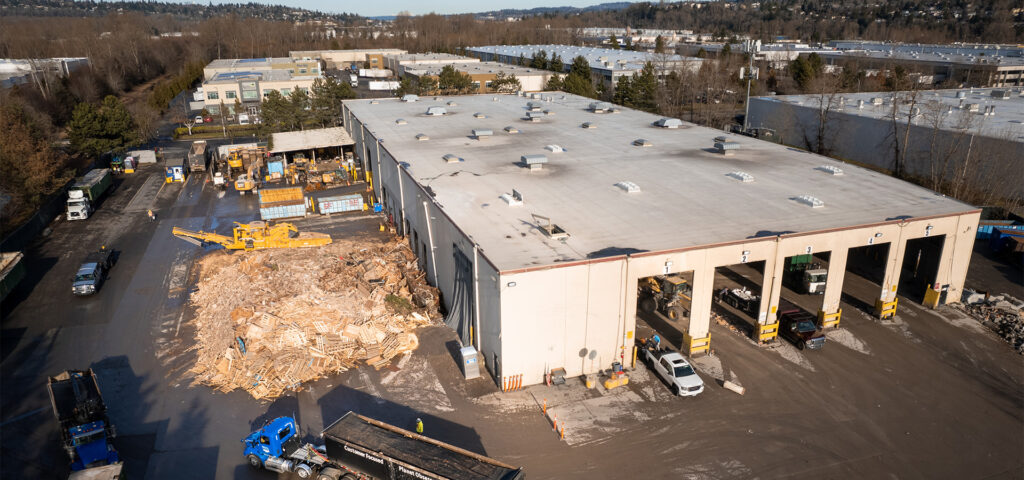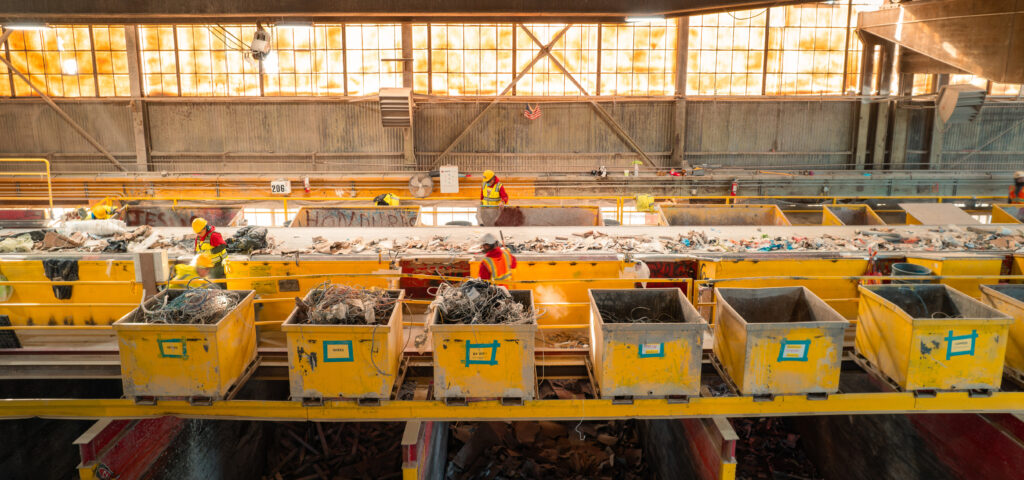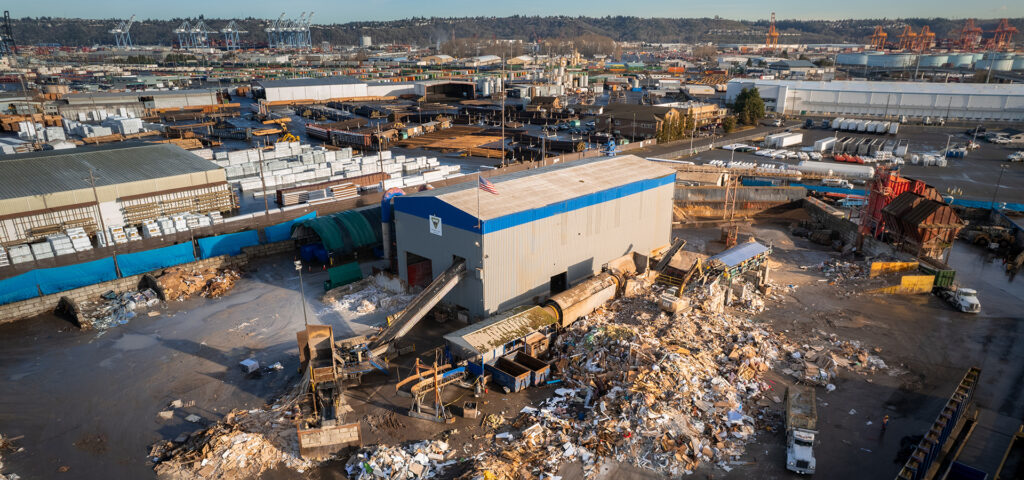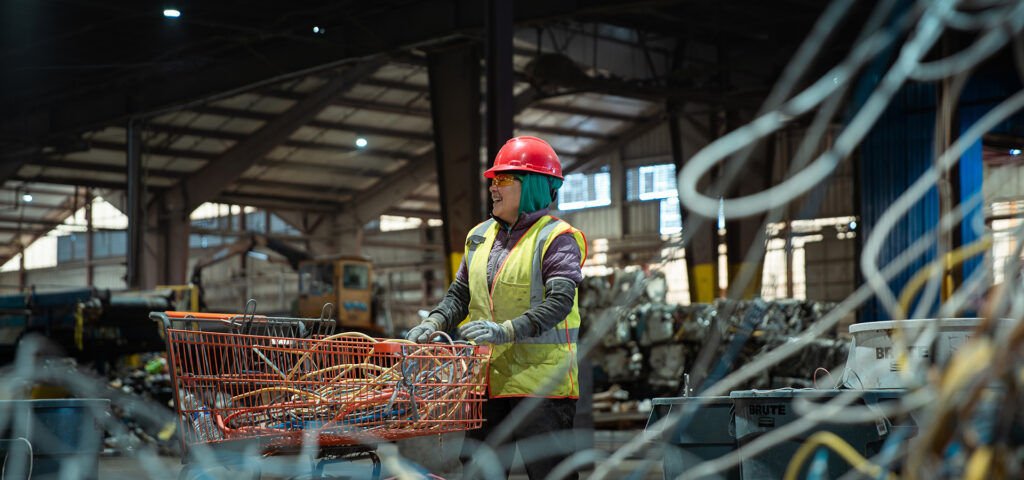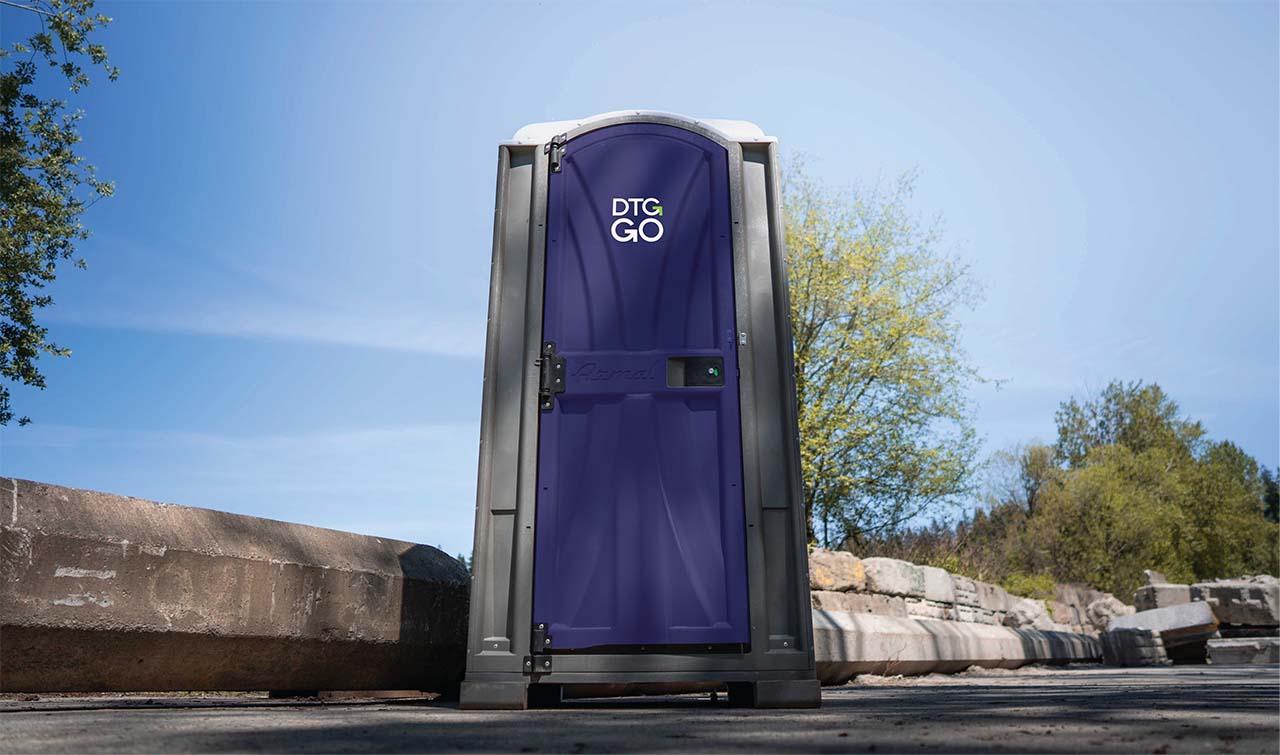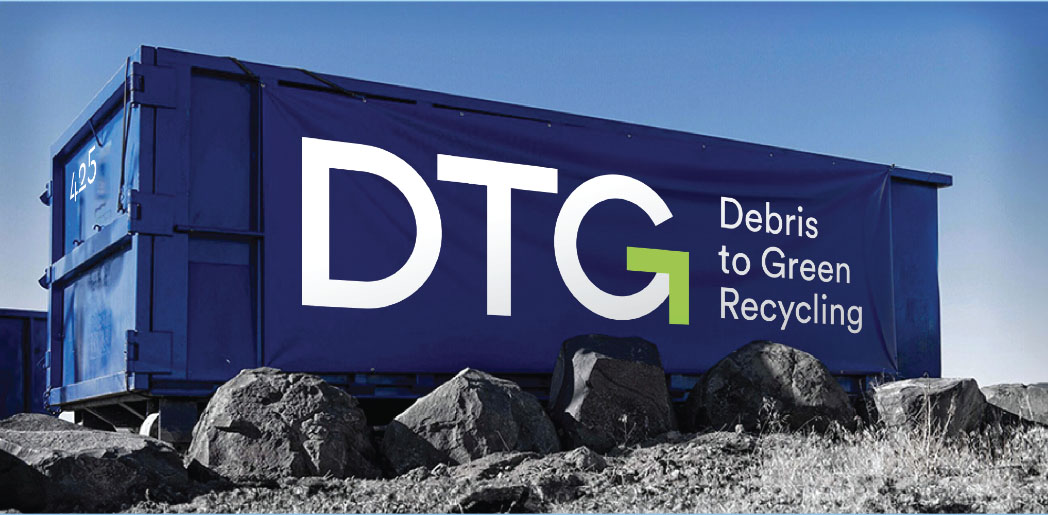Mattress Recycling Center
Drop off your mattress today!
At DTG Recycle, we utilize advanced sorting technologies to recognize and efficiently sort materials. DTG Recycle has Mattress Recycling Centers all over Washington State. We accept mattresses for a nominal charge at some of our locations. Contact us for a price quote for mattress recycling.
Industry sources estimate that Americans dispose of up to 20 million mattresses yearly, contributing up to 800 million cubic feet to landfills. That’s a lot of foam and box springs! The good news is that you can take action to change it.
From January 2023 through June 2023, DTG Recycle has recycled over 4500 mattresses. Let’s go over what mattress parts are recyclable, how to dispose of your old mattress, its recycling process, and the different methods of recycling mattresses.
How to Dispose of Mattresses for Recycling?
The proper way of a mattress disposal is to find a recycling center or drop-off location that accepts them. Some debris management facilities or mattress manufacturers may offer a pickup or drop-off service for recycling. Before recycling the mattress, it’s important to check if the facility accepts all types of mattresses or if there are specific requirements for size, condition, or materials.
In some cases, there may be a fee for recycling services. Mattresses are heavy so transporting them can be challenging and may require special arrangements, such as renting a truck or using a professional mattress removal service.
What Parts of a Mattress can be Recycled?
When mattresses are recycled, the various components of the mattress are separated and processed to create new products. Here are some examples of what happens to the different components:
- Foam: The foam from mattresses can be shredded, compressed, and baled into a raw material used in the production of various products. For example, it can be used to make carpet padding, insulation, and even animal bedding.
- Metal Springs: The metal springs from mattresses are usually baled and sent to scrap metal dealers for recycling. The metal can be melted down and reused to make new metal products.
- Fabric: The fabric from mattresses is typically separated and baled. It can be recycled and used to make new products such as insulation and carpet padding.
- Wood: The wood from box springs is usually sent to recycling centers or used as fuel.
- Other materials: Other materials such as plastic and synthetic fibers may also be recovered during the recycling process and used in the manufacturing of new products.
How to Recycle a Mattress?
Recycling a mattress is an important step in reducing debris and conserving resources. It involves disassembling the mattress, separating and processing its components, and repurposing the materials for new products. In this process, various materials such as metal, foam, wood, and textiles are recovered for reuse.
1. Collecting Old Mattresses
Mattresses eligible for recycling should meet specific standards, including being made of metal, textiles, wood, and foam, and being dry and free from mold. However, it’s worth noting that not all mattress types are accepted for recycling by mattress recyclers, such as futons, air mattresses, mattress pads and toppers, and waterbeds.
You can collect old mattresses through various methods, including taking them to a recycling facility or scheduling a pick-up with your local mattress disposal company. Many mattress retailers may also offer a pick-up service for old mattresses when delivering a new one.
Organizations that generate large quantities of mattresses should work with a mattress recycler to site either a temporary or year-round collection location. Mattresses should be collected in a dry, covered storage location with side-door access, such as a storage unit, trailer, or warehouse space to minimize exposure to weather. Collecting mattresses in any kind of open-top dumpster, even if loosely covered with a tarp, is not recommended.
2. Inspecting for Bed Bugs
Bed bugs are a common problem in mattresses, and they pose a significant challenge to mattress recyclers. Here are some best practices for bed bug management in mattress recycling:
- Inspect Mattresses: Mattresses should be inspected thoroughly for bed bugs before they are accepted for recycling. This can be done visually or with the help of bed bug detection dogs.
- Quarantine Infested Mattresses: A mattress found to be infested with bed bugs should be quarantined immediately to prevent the spread of bed bugs to other mattresses or areas of the recycling facility.
- Heat Treatment: Heat treatment is an effective way to kill bed bugs in mattresses. The mattress is placed in a special chamber where it is heated to a temperature that is lethal to bed bugs. This process should be carried out by professionals.
- Use Encasements: Mattress recyclers can use bed bug-proof encasements to prevent bed bugs from infesting mattresses during the recycling process. These encasements are made of materials that bed bugs cannot penetrate.
- Education and Training: Mattress recyclers should provide education and training to their employees on bed bug prevention and management. This includes recognizing the signs of bed bugs, knowing how to handle infested mattresses, and taking preventative measures to prevent bed bugs from infesting the recycling facility.
By following these best practices, mattress recyclers can effectively manage bed bugs and prevent their spread during the recycling process.
3. Deconstructing
Deconstructing mattresses for recycling is a labor-intensive process that requires specialized equipment and skills. The following are some best practices for deconstructing mattresses for recycling:
- Use proper safety equipment: Workers should wear personal protective equipment, including gloves, eye protection, and masks, to protect them from dust, debris, and other hazards.
- Cut the mattress into pieces: The first step in deconstructing a mattress is to cut it into manageable pieces. This can be done with a box cutter or a specialized mattress cutting machine.
- Remove the cover: The outer cover of the mattress should be removed to expose the inner components. This can be done by cutting or tearing the cover off.
4. Separating and Compacting Material Components
Once the cover is removed, the components of the mattress should be separated. This includes separating the foam, fabric, metal springs, and wood. The separated components should be thoroughly cleaned to remove any dust, dirt, or debris.
The individual components of the mattress can be processed for recycling or repurposing. Foam can be shredded and used for carpet padding or insulation, metal springs can be melted down and recycled, and wood can be chipped for use as mulch or fuel.
5. Transporting for Reuse
Transport the separated and compacted material components to recycling facilities that accept them for reuse. Some recycling facilities may offer pick-up services for large amounts of material, while others may require drop-off at their facilities.
What are the Methods used to Recycle Mattresses?
Mattress disposal is challenging, which is why recycling them has become increasingly popular. Two methods used to recycle mattresses are mechanical recycling and chemical recycling.
- Mechanical Recycling – Mechanical recycling involves dismantling the mattress and separating its components, such as the foam, metal springs, and fabric. The dismantling process starts by manually cutting off the fabric layer from the mattress. Once the fabric is removed, the metal springs and foam are separated. The foam is shredded, and the metal springs are sorted, baled, and sold to scrap dealers. The shredded foam is then processed through a mechanical process that separates it into different components. These components are usually a mix of different types of foam, including polyurethane foam, memory foam, and latex foam. Once separated, the foam is then compressed into bales for shipping to manufacturers who will use it as a raw material to make new products, such as carpet underlayment, padding for furniture, and insulation.
- Chemical Recycling – Chemical recycling involves breaking down mattress components into their constituent chemical elements. Chemical recycling can be done using different techniques, such as pyrolysis, gasification, and hydrolysis.
- Pyrolysis involves heating the mattress in the absence of oxygen to break it down into its constituent chemical elements. This process produces oil, gas, and char. The oil and gas produced can be used as fuel, while the char can be used as a soil conditioner.
- Gasification involves heating the mattress in a low-oxygen environment to produce a mixture of gasses, such as hydrogen and carbon monoxide, which can be used as fuel.
- Hydrolysis involves using chemicals to break down the foam into its constituent chemicals, such as polyols and isocyanates, which can be used to make new products.
Both mechanical recycling and chemical recycling are effective ways to recycle mattresses. Mechanical recycling is more commonly used as it is less expensive, and the resulting products are of good quality. However, chemical recycling has the potential to recover more of the raw materials and produce higher-value products. Regardless of the method used, recycling mattresses is a sustainable way to reduce debris and conserve resources.
Why Recycle Mattresses?
- Reduce debris dumped in landfills
- Conserve natural resources
- Save energy and reduce greenhouse gas emissions
- Create jobs in the recycling industry
- Promote sustainable debris management practices
- Help to support a circular economy.
Statistics on Mattress Recycling
85% of Mattress Parts are Recyclable
About 85% of mattress parts are recyclable. Mattresses are composed of 48% box and steel inner springs, 28% foam, 14% fabrics and fibers, and 5% wooden box spring. The foam can be turned into padding, carpet, or cushions, while the springs can be repurposed into new steel. The box springs can be shredded to create mulch, animal bedding, or biomass. The fibers and fabrics can be used to make carpets and industrial filters. 1
Over 4500 mattresses recycled by DTG Recycle between Jan and June 2023
4500 mattresses are enough to top the Space Needle over 45 times
Every mattress you recycle, you will save the following…
According to a lifecycle analysis mattress program in 2022, one mattress worth of reclaimed materials saved 500 gallons of water, conserved 3 days’ worth of energy use, and reduced the greenhouse gas emissions produced by driving a car by 60 miles.2
FAQs for Mattress Recycling Service
Where can I recycle mattresses?
Mattresses can be recycled at most recycling centers, as well as at curbside pickup programs in many areas. Check with your local recycling program for specific guidelines on how to recycle mattresses in your area.
Can I make money by recycling mattresses?
It is possible to make money by recycling mattresses, but the amount of money you can make will depend on a variety of factors, such as the current market demand for recycled materials, the type and condition of the mattress, and the recycling infrastructure in your area. Some mattress recycling facilities may pay individuals or businesses for certain types of mattresses or materials, such as metal springs or foam, while others may charge a fee for recycling services.
Additionally, there may be opportunities to sell recycled materials to manufacturers or other businesses that use those materials in their products.
How many times can a mattress be recycled?
Mattresses can typically be recycled once or twice, depending on the materials and the recycling process used. The components of a mattress, such as the metal springs, foam, and fabric, can be broken down and reused to create new products. However, the recycling process can be complex and may not be cost-effective for all types of mattresses, especially those that are heavily soiled or damaged.
Additionally, some materials used in mattresses, such as certain types of foam or chemicals, may not be recyclable or may require special handling. Overall, while mattresses can be recycled, the recycling potential may vary depending on the specific materials and recycling infrastructure available in a given area.
Can air mattresses be recycled?
Yes. Air mattresses can be recycled completely. Once deflated and cleaned, you can dump them in your local plastic recycling bin or contact a specialized bed removal company that recycles all types of mattresses. Recycling an air mattress is a simple and straightforward process.
Are memory foam mattresses recyclable?
Memory foam is a fully recyclable polymer made from polyurethane, as long as it is not combined with other polymers to form composites. The preferred approach for recycling memory foam is reuse rather than chemical degradation.
What happens to mattresses that are recycled?
After the metal springs are removed from the mattress, they are compressed and packaged into bales and sent to a metal recycling plant where they are melted down and cast into new steel products. The foam components of the mattress are also recovered, cleaned, and processed to create new products like padding, cladding, or even a new mattress.
References
1 11 Interesting Facts about Mattress Recycling – Paul’s Rubbish. Retrieved June 15, 2023, from https://www.paulsrubbish.com.au/11-interesting-facts-about-mattress-recycling/
2 Mattresses – Product Stewardship Institute. Retrieved June 15, 2023, from https://productstewardship.us/products/mattresses/
Facilities that accept mattresses
- 425-365-4266
-
8624 219th St SE
Woodinville, WA 98072
- (425) 549-9715
-
701 SW 34th St
Renton, WA 98057
- 253-627-1180
-
1805 Stewart Street
Tacoma, WA 98421
- 425-507-9425
-
24105 Woodinville-Snohomish Road
Woodinville, WA. 98072

